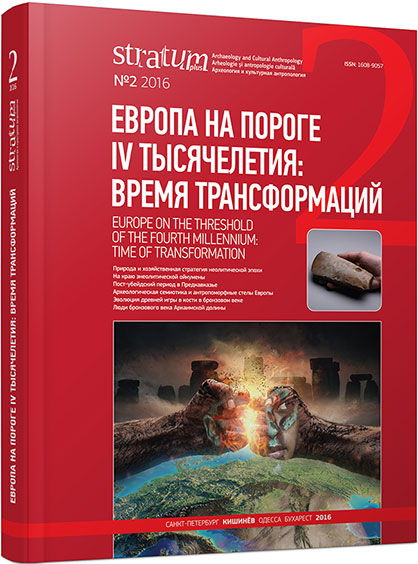Эволюция древней игры в кости: источники позднего бронзового века
Evolution of the Ancient Game of Dice: Sources from the Late Bronze Age
Author(s): Vladimir I. Stefanov, Sergei V. Kuzminykh, Yury P. Chemyakin, Igor O. KoryakovSubject(s): History, Archaeology, Cultural history, Ancient World
Published by: Издательский дом Stratum, Университет «Высшая антропологическая школа»
Keywords: Eurasian steppes; Late Bronze Age; Srubnaya-Andronovo world; dice; semantic of signs
Summary/Abstract: The article describes and generalizes finds of game/divination dice from the sites of Srubnaya-Andronovo cultural area which occupied almost the whole territory of the Eurasian steppes and forest-steppes in the 2nd millennium BC. The authors offer information about 31 finds of dice (28 intact and 3 damaged pieces) and more than 50 half-finished items which demonstrate different stages of their manufacturing. All of them are found in the course of excavation of 15 archaeological sites including 13 settlements, anthropogenic part of a mine and only one cemetery. The area of finds in the Srubnaya-Andronovo period in contrast to cultures of the Early and Middle Bronze Age points to the shift of “active game zone” in the Late Bronze Age to the Southern Ural and adjacent western and eastern territories. Dice seem to have been used both for game and ritual purposes. We do not know the rules of the game practiced by the contemporary archaeological cultures, that is, algorithms of usage of dice, and we are inclined to consider the signs on the dice as “differentiating” pictograms which did not progress yet to be numeric ideograms.
Journal: Stratum plus. Археология и культурная антропология
- Issue Year: 2016
- Issue No: 2
- Page Range: 235-253
- Page Count: 19
- Language: Russian
- Content File-PDF

